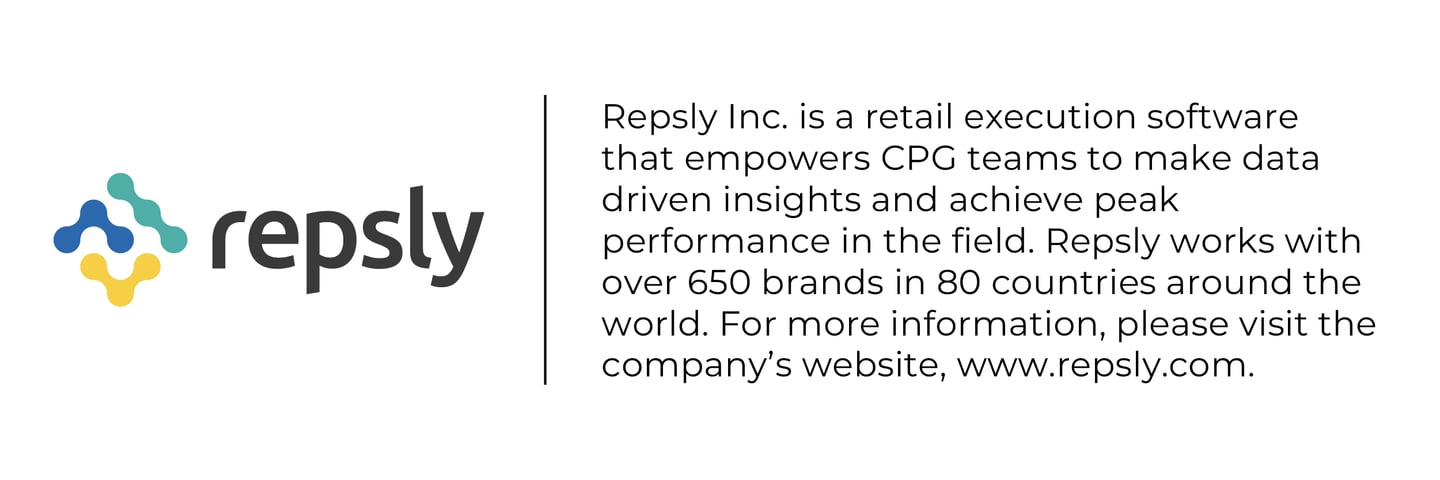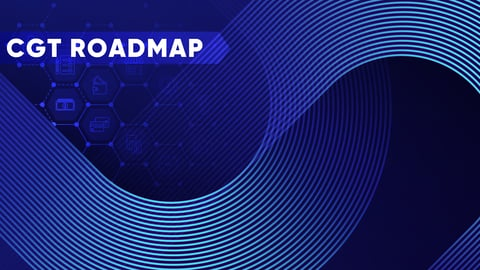What’s New and What’s Next About Retail Execution Demands
While the new normal may have finally (finally!) arrived, this hardly means things have become predictable. Thanks to an increasingly fragmented retail environment, today’s consumer goods organizations are battling for more visibility into operations and more leverage within their partnerships.
Cait Will, Chief Revenue Officer of Repsly, shares insight into how CPGs are navigating new demands in stores and online; where they’re most eager to try something new; and what we can expect from the upcoming wave of influential consumers.
CGT: We’ve talked a lot about new normals, but it took quite some time for things to settle down for retail execution. What are today’s CPGs most focused on right now?
Cait Will: What aren’t they focused on? These are not easy jobs today. But now that things have settled down — and we can maybe stop saying that once and for all — CPGs have the opportunity to switch focus and lean into creating and maintaining cost savings in the retail environment, driving stronger relationships with their retail customers, and dedicating more time and money to testing new products and tech in their retail execution strategies to improve the shopping experience, and their bottom line.
Brands are also giving themselves freedom to do less, better. So let’s not have 10 retail initiatives or MBOs — let’s just have two or three, and get them done well this year.
CGT: How have their challenges shifted, and how are they working to overcome them?
Will: One noteworthy, rising challenge we’re hearing from many of our food and bev clients is the private label competition. One of our customers, Sara Clarkson, CEO at Marketsupport Canada, wisely reflected on the work retailers are doing to further differentiate through their private labels in not only offering greater cost reduction for the consumer, but in also getting the edge on new items.
In many CPG categories, there is a lot of sameness in the brands, so anything new, with a history from other markets, is met with a positive consumer reception, even if it’s private label, according to Sara Clarkson, Marketsupport CEO. She notes that this only puts more pressure on tried-and-true CPG brands to constantly innovate and defend, while still staying “accessible” to consumers.
One other big challenge I heard multiple times at the CGT Consumer Goods Sales and Marketing Summit last month was just this sense of “blindness” organizations have to their shelf conditions. If you’re a big CPG using hundreds or thousands of distributors, or brokers without your own team in the field every single day, you lose a lot of control and visibility into your stores, and there’s not a lot of “healthy” data on store conditions coming back your way.
To us, that feels unfair and like a problem we should solve together. We’re fully aware it's not always easy to gain alignment and adoption across all key stakeholders and players in the chain. Aligned incentives are a great starting point, but there’s more work to be done there for sure. Easy-to-use and -adopt technology that can be entered into existing workflows is a key consideration when trying to partner and gain access to smarter, stronger retail environment data. But it can be done.
CGT: Where are you seeing brands most eager to explore when it comes to emerging technologies within retail execution?
Will: Well, unsurprisingly, we see many more CPGs coming to us, very willing to seek out new technologies such as AI image recognition for retail work, to ensure that shelf command and visibility are in their grasp at the corporate level. Sales, merchandising, and IT leaders have much more appetite to test this technology in their existing workflows to drive efficiency and intelligence in their teams, and ultimately, aim to increase sales. The increase in AI image recognition adoption in our client base has climbed 250%-plus year-over-year. If you can save time for your team while helping them make smarter decisions, why not try it?
Beyond that, our customers are using their data with emerging tech in very smart, very nimble ways. One of our customer’s organizations is working very hard to marry what the retail data is saying (point of sale + AI-IR results) to target and focus on the stores that can make a direct impact at the shelf, fix problems, and ultimately, help their brand partners to sell more. Their focus is on impacting change through the data collected. All in near real-time. These aren’t “novel” ideas anymore. These are tangible tactics you can deploy today.
Lastly, we talk with customers about other very interesting high tech assets which if used right, could make our technology (Repsly) even smarter — like sensors that track inventory levels, and algorithms that predict when something might sell out, and interrupt or guide teams to the right places. Some brands are even playing around with augmented reality (AR) to help train their teams or to create cooler shopping experiences for customers, or ensure trade promotions are built to spec.
CGT: What’s next on this front? What do you think will be top of mind in six months?
Will: In the next six months, brands are going to focus heavily on improving the in-store experience because, after all, 75% of all sales happen there. With so many options out there, they know they need to create a shopping environment that grabs attention and makes it super easy to buy their products. This could mean better in-store displays, separate shopping for pickers, more interactive setups, dabbling in additional retail media spaces and experiences, or better leveraging their first-party customer data when customers are in-store to help drive stronger in-store offers and experiences.
Sustainability and authenticity will also be very top of mind with CPGs because of Gen X-ers — and really also the Alphas are coming right up and are a heavy influencer on their parents' (ahem, me) decision-making. Brands are very likely thinking about how they can make their brand experiences and identity truly authentic and green-friendly, and their in-store executions will need to back it up — a.k.a., they’ll have to think greener, like using less wasteful packaging or setting up displays that are more eco-friendly.
Those generations are weirdly smart, and I say that in the nicest way possible: They see wastefulness and inauthenticity a mile away — and those brands that recognize and reflect back their moral “high ground” will succeed longer term with those generations (and their parents!).





